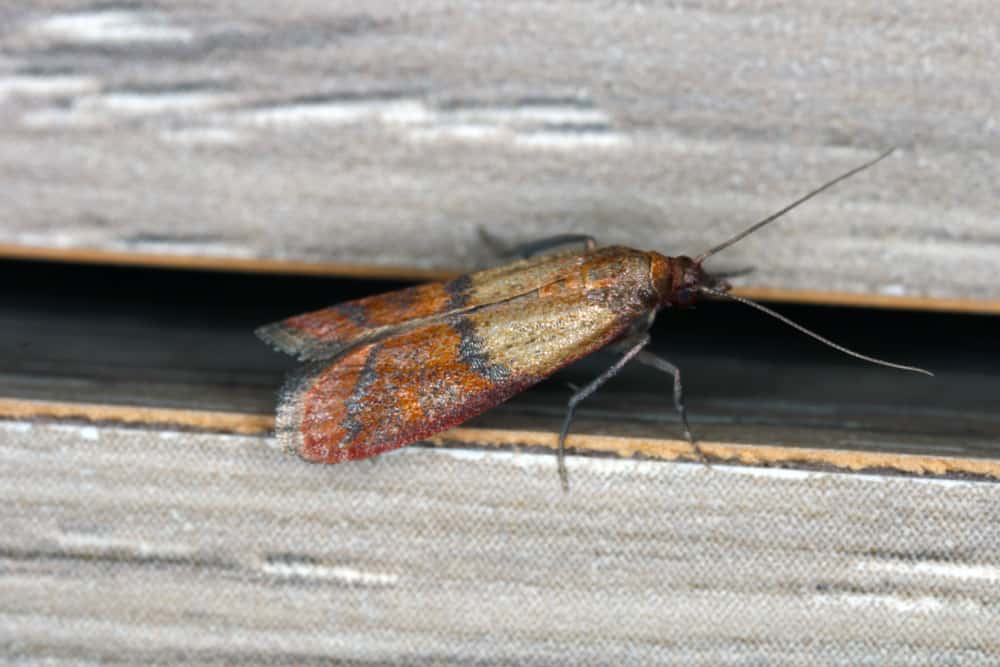Living in the Land of 10,000 Lakes, you might anticipate plenty of moisture-loving insects roaming around. The University of Minnesota studies all kinds of helpful and harmful insects in the area, but a few are more common than others.
These include:
- Boxelder bugs
- Sowbugs, centipedes, and millipedes
- Cockroaches
- Wasps
- Earwigs and Silverfish
- Brown Marmorated Stink Bugs
- Indianmeal Moths
- Carpet Beetles
- Weevils
What’s most common will vary depending on where you live in Minnesota and what your living space looks like, but these common pests and helpful insects show up across the state. Keep reading to learn how to identify these common house bugs in Minnesota.
Common House Bugs In Minnesota
1. Boxelder Bugs

The Boxelder Bug (Boisea trivittata) is something you’ve probably come across without realizing it. While they’re not poisonous or particularly aggressive, they have a bright red pattern that may have you guessing otherwise.
They’re mostly black with red or orange showing up in strips on their wings as well as a solid splash of color underneath. The younger Boxelder Bugs are more vibrantly colored, but this seems to fade over time.
The bugs don’t particularly want to be inside, but they’ll venture in during the colder months. Sealing up any structural cracks or screen tears should be enough to keep them outside in their box elder, maple, and elm tree homes.
2. Sowbugs, Centipedes, and Millipedes
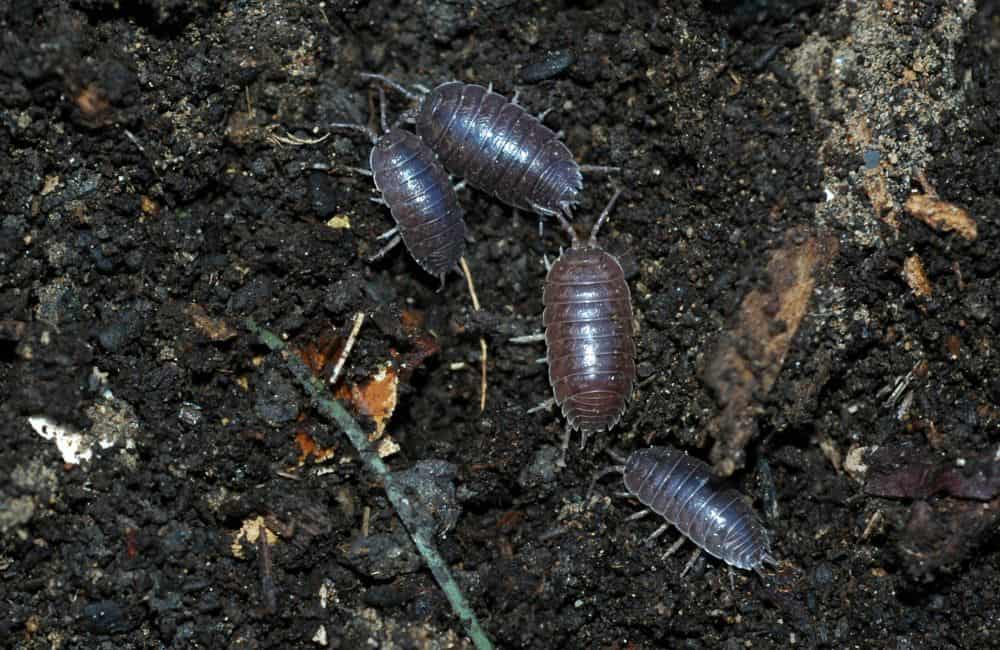
You may already recognize the slender bodies and multitude of legs these creatures possess. While they’re not particularly similar, sowbugs, centipedes, and millipedes are more closely related to lobsters than other insects.
They don’t pose a major threat to humans, although some centipede and millipede stings are less than pleasant. In most cases, they simply want to be left alone in the moist leaf litter they call home, and they’re extremely beneficial balancing the organic waste of Minnesota.
The Sowbugs (Oniscidea), commonly referred to as pill bugs or roly polies, are small and flattish. They have 7 pairs of legs and a plated back that shields them from danger when they roll up in a ball. They prefer to stay outside because they will dry out inside a house.
The House Centipede (Scutigera coleoptrata) is the most common one you’ll find. It has a flat body that ranges in color from brown to gray to yellow. Some have dark stripes down their back, but all have 15 pairs of long striped legs and long antennae.
Another common centipede in Minnesota is the Stone Centipede (Lithobius forficatus), which grows longer than the House Centipede, has a reddish color, and prefers to stay out of the home.
Millipedes like the Greenhouse Millipedes (Oxidus gracilis) have a long, armored, worm-like shape with plenty of very short (yet efficient) legs. They have two pairs per body segment, but move much slower than most centipedes. Millipedes usually curl up into a spiral when you scare them or they die.
We suggest leaving these arthropods out of your pest control plans as much as possible. Unless you stumble across a venomous species, they offer nothing but benefits to your lawn or garden.
3. Cockroaches
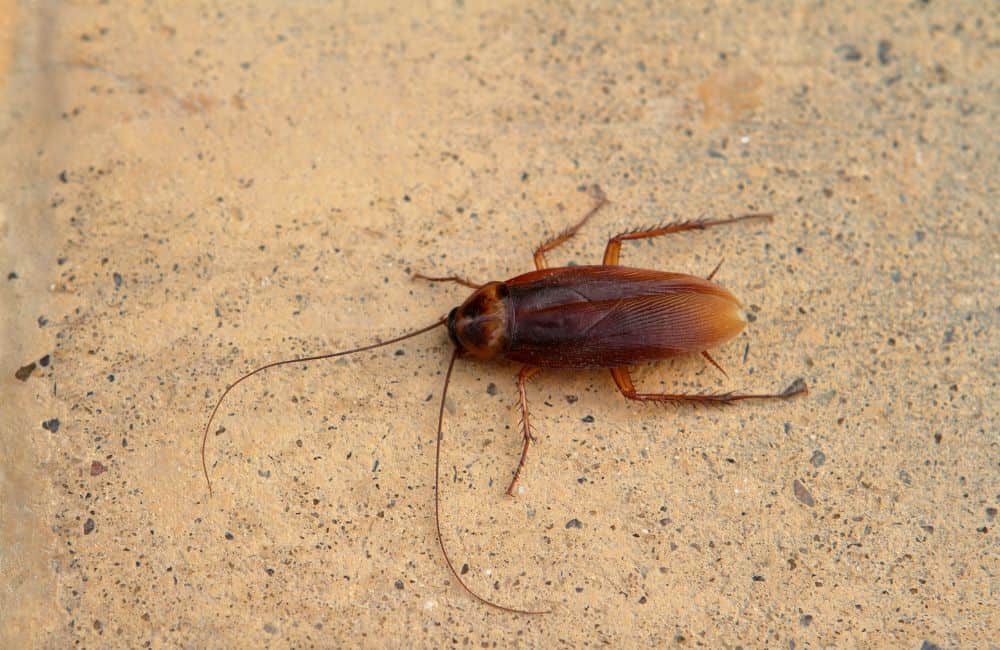
It’s probably no surprise to see these pests on the list. Overall, there are four major types of cockroaches found in Minnesota homes:
- American Cockroaches (Periplaneta americana)
- Brown-Banded Cockroaches (Supella longipalpa)
- German Cockroaches (Blattella germanica)
- Oriental Cockroaches (Blatta orientalis)
While they rarely bite, they do plenty of damage by running over your counters, cabinets, and even food. They can flatten their bodies to fit through the slightest crevices, and carry disease-causing bacteria like E. Coli.
They’re also incredibly resistant to commercial pesticides, and you may need to have a pest control specialist come out regularly to keep them at bay.
4. Wasps
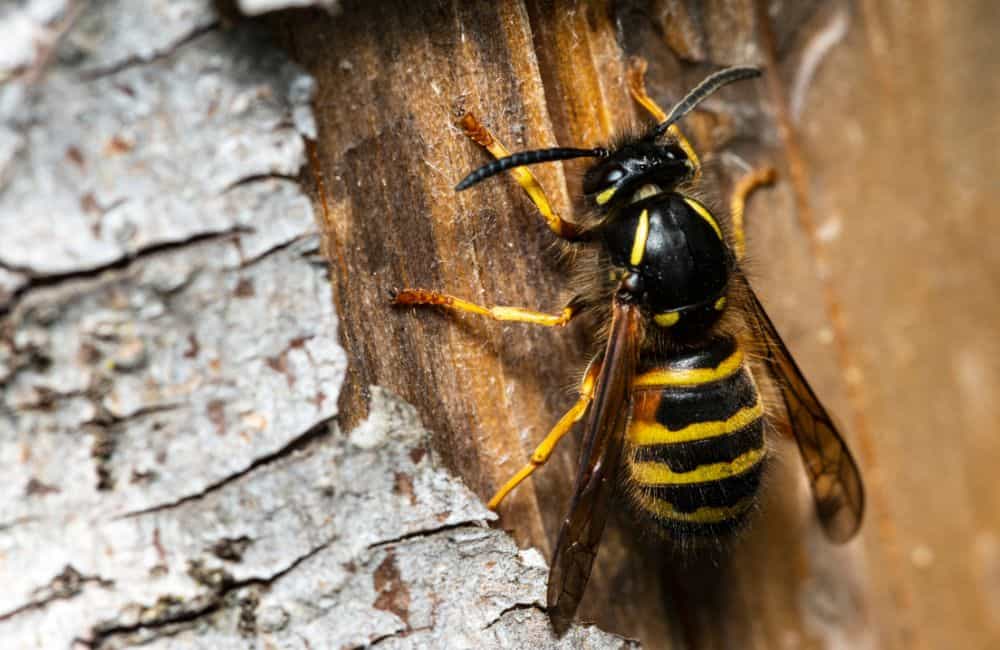
Minnesota is home to a variety of social wasps, including:
- Yellowjackets (Paravespula spp.): live in subterranean nests and reach ½ inch in length; known for their aggression and yellow-black stripes
- Paper wasps (Polistes spp.): appear similar to yellowjackets, but build upside-down umbrella nest; longer bodies (⅝ to ¾ inches long) and tuck their legs as they fly
- Bald-faced hornets (Dolichovespula maculata): similar in size to paper wasps with dark bodies and white or yellow faces; usually live in large nests built in trees
- Mud daubers (including Sceliphron caementarium and Chalybion californicus): usually nest in singular mud nests built in tight spaces; hunt spiders; pretty non-confrontational
Unless you’re allergic to one of these stinging insects, you can handle the nest on your own, although you may not need to if it’s not bothering you.
Wear long pants and sleeves, gloves, and even protective eyewear and attack at night using a commercial wasp spray or powder to cover the entrance(s) of the nest. Wait a few days, and they should all die off or abandon the nest, providing you an opportunity to dispose of it.
5. Earwigs and Silverfish
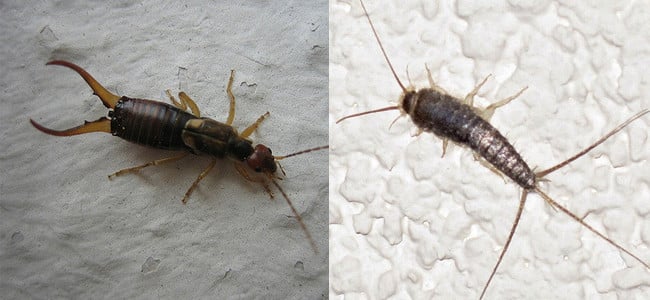
Credit: americanpest
Earwigs (Dermaptera) and Silverfish (Lepisma saccharina) are often mixed up because they’re rarely seen and tend to pop up in similar environments, but they’re pretty different.
Earwigs live in large colonies and prefer to stay outside. They won’t bother you unless they’re pushed inside, and even then it’ll mostly be the odd odor they carry. Earwigs often die soon after they cross the threshold into your basement, bathroom, or other humid room.
Silverfish have a softer, silver body with 3 long antennae coming from their tail. This is pretty stark contrast to the dark body and 2-antennae form of earwigs.
Silverfish are also much more destructive. They prefer to live inside, feasting on starchy foods in your pantry as well as books and papers you’re stored away. Some people are allergic to the exoskeletons they leave behind as they grow.
6. Brown Marmorated Stink Bugs
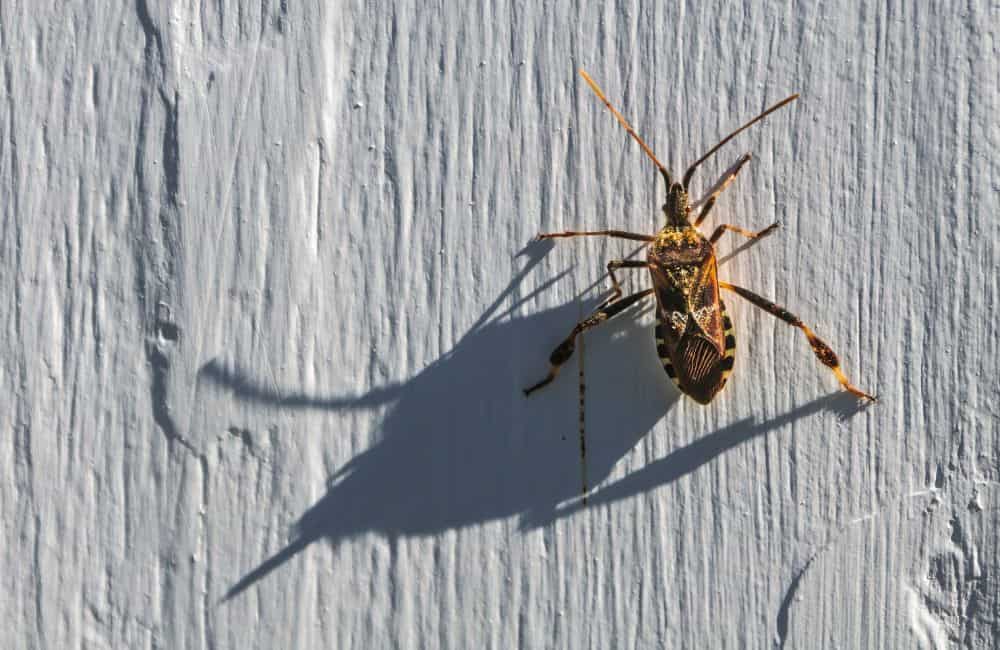
The Brown Marmorated Stink Bug (Halyomorpha halys) is originally from Southeast Asia, but they managed to journey to North America as early as 1996. You usually find them inside when the temperature drops below the temperate climate they’re used to.
They’re only about 17 mm long with an abnormal shield-shaped body. Their name comes from their brown appearance from above, but these stink bugs usually have cream colored undersides.
Many claim the odor they emit resembles coriander. This is a defense mechanism meant to deter snacking birds, but it’s effective at stunning unsuspecting humans as well.
Furthermore, the fluid they excrete can be toxic and easily irritates the skin or eyes. They don’t bite, but they have a proboscis that can devastate certain trees and crops.
7. Indianmeal Moths
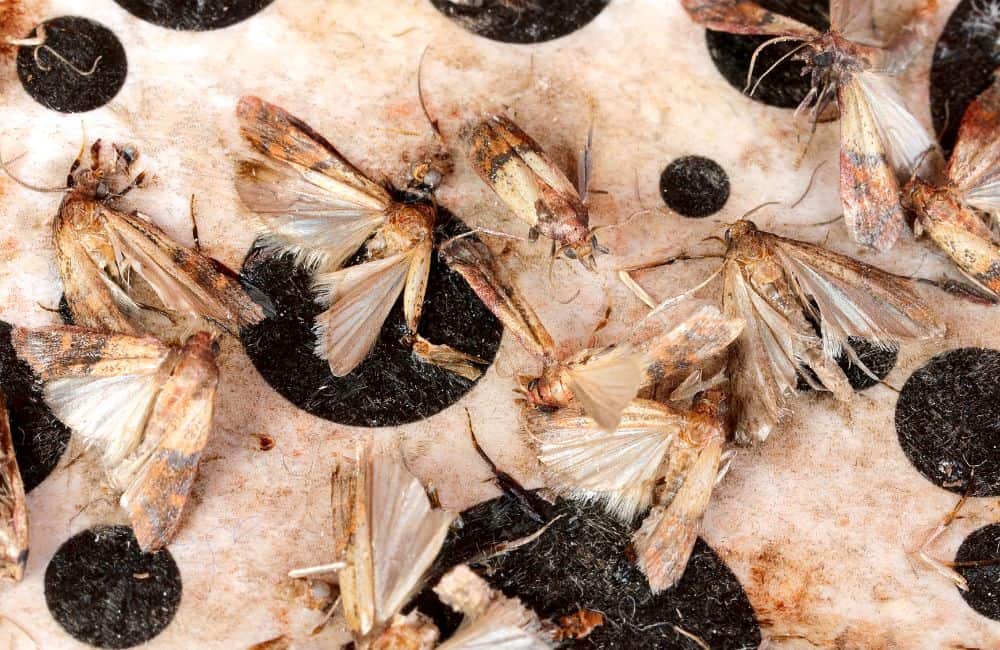
The Indianmeal Moth (Plodia interpunctella) is another destructive bug that commonly infiltrates Minnesota homes. These reach about ⅝ inches long with reddish copper tipped wings, although finding them in your rice bin is usually identification enough.
Their diet originally focused on Indian Corn (Maize), but they’ll be happy to help you eat through any grains, spices, dry fruits, or even pet food you have at home. Prevention is more important than responding to these infestations, and you should keep all dry goods in air-tight containers.
If you find them in your home, dispose of whatever they’re eating (you don’t want it anymore) and move the rest of your food into proper containers. You can freeze certain pantry foods to make sure nothing develops.
8. Carpet Beetles
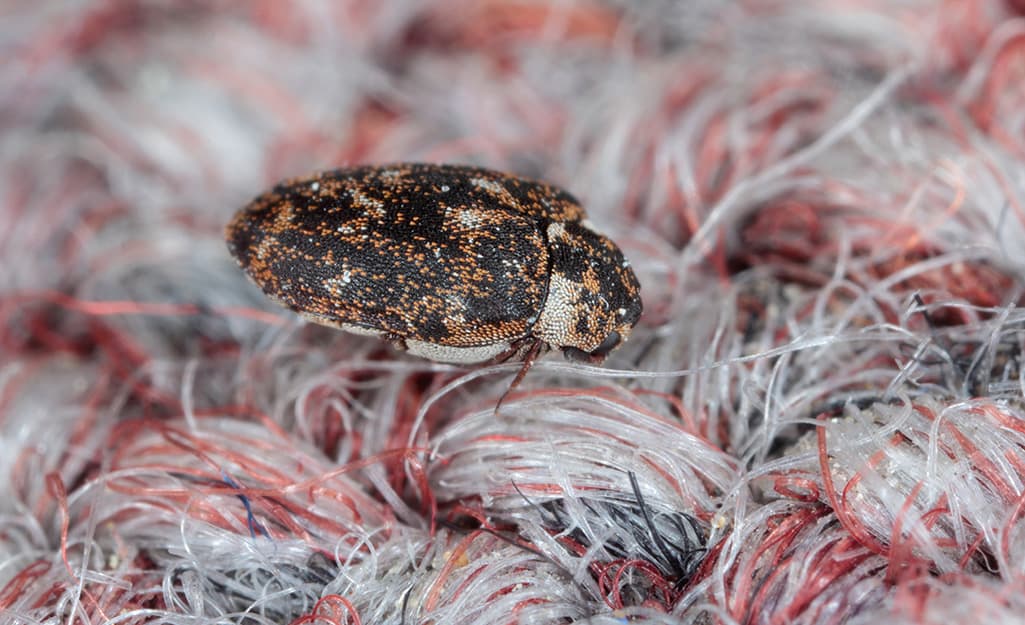
Credit: homedepot
Carpet Beetles (Anthrenus verbasci) are robust shaped and reach about ¼ inch long, making them much smaller than other beetles you may come across. Also unlike other beetles, you’re most likely to find them in your home during the warmer months.
Carpet beetles eat pollen, but their larvae are attracted to fibers, and they’ll devour any fibers of animal origin you have in your home. While carpets were once made with natural fibers, most are now synthetic. This means the bugs are more likely to infiltrate your closet instead, chewing expensive holes through your wool, silk, or fur.
Larder Beetles (Dermestes lardarius) are a type of carpet beetle distinguished by the light-colored spotted band across the top of their wings. They’re attracted to animal by-products (hence “lard”), and will single out protein-rich sources like dead animals, cured meat, and pet food as well as wool, fur, and features.
9. Weevils
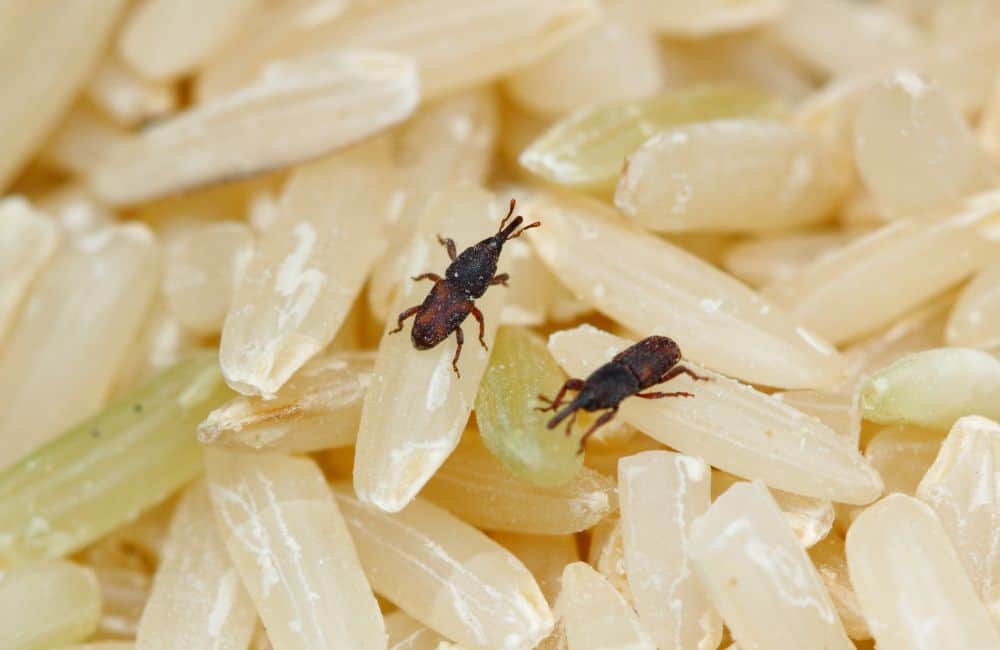
Weevils (Curculionoidea) are fairly distinct varieties of beetles with a lightbulb-shaped body and sharp snouts. They often venture inside when the weather outside becomes hot and dry, but they don’t last long.
While the beetles are pretty harmless, the larvae often infiltrate your pantry and go after any grains or rice you have stored. Like the Indianmeal Moths, you must store your food properly to deter an infestation.
Common varieties in Minnesota include:
- Strawberry Root Weevils (Otiorhynchus ovatus)
- Polydrusus weevils (Polydrusus impressifrons)
- Imported Longhorned Weevils (Calomycterus setarius)
Signs of them in the home mean you need to double down and seal cracks, repair damaged or broken frames, and even replace old doors or windows. You shouldn’t need to respond with any pesticide, even if you find the larvae in your pantry.
Conclusion
Like every other state, Minnesota has plenty of bugs to keep the circle of life turning. Some of them seem to prefer our homes to what’s going on outside, and they’ll venture in when the weather takes an undesirable turn.
Most of the common house bugs in Minnesota are harmless and easy to get rid of, but large or persistent infestations may require special attention. Make sure you reach out as soon as possible to improve your chances of eradicating any nasty pests.
Are you dealing with a house bug that isn’t on the list? Let us know the details, and we’ll do what we can to help you identify it.
